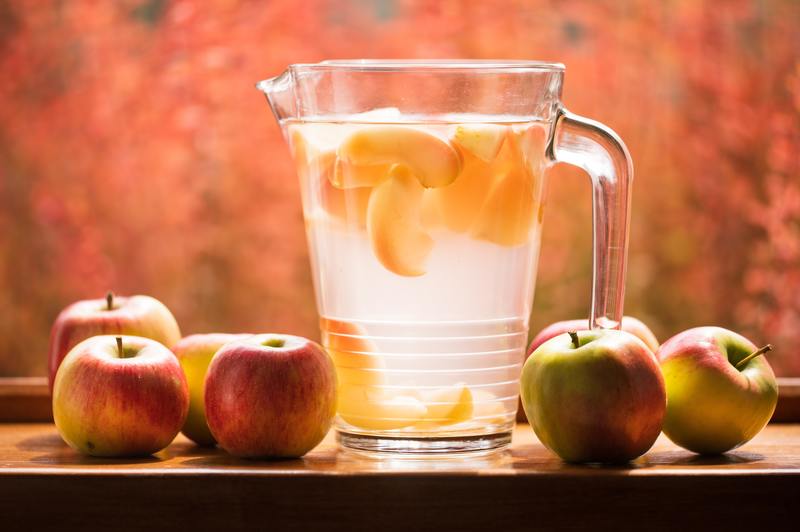The answer to the question “what kind of mold grows in apple juice” is white mold. White mold is a common type that victimizes varied surfaces, like your plants or pool water.
To know more about this type of mold, read until the end!

The Kind Of Mold That Grows On Apple Juice
White mold is a lesser-known mold compared to black mold, but it still has adverse effects. For one, it can grow on almost any surface of your house, from your drywalls to your food.
Secondly, they have adverse health effects, especially when ingested. Here’s an article about what happens if you drink mold to warn you about the consequences of drinking mold.
Moreover, white mold starts as white but may turn into different colors (e.g., green, grey, or black). It also has several other species, one of which is Penicillium.
Here’s an article on “where does Penicillium mold grow” to guide you on the possible problem areas for its growth. Apart from Penicillium, other forms of white mold are Cladosporium and Aspergillus.
How And Why Does Mold Grow On Apple Juice?
Apple juices are typically pasteurized, so they do not get spoiled quickly. However, when they get past their expiration date, there’s a higher chance of contracting mold.
Another reason for mold growth on apple juice is the preservation method used. The preservation method is imperative in the shelf life of apple juice, so if it is not done correctly, it’ll likely spoil faster.
Moreover, since mold grows on moisture-rich surfaces, it may not be surprising for it to develop on the apple juice. Mold growth will likely happen if you do not seal the container tightly.
Mold spores are everywhere, and when they chance upon your poorly-sealed apple juice, they may settle there.
Signs Of Apple Juice With Mold
If your apple juice is stored in an opaque container, it may be difficult to see if there is mold. However, the smell of spoilage (or fermentation) may trigger you to think that the juice is already spoiled.
If the apple juice smells like beer or wine, then it is likely undergoing fermentation. Another sign of spoiled apple juice is when you pour the liquid into a glass, noticing that the color is deeper.
A more obvious sign of mold is visible mold growth. There may be patches of mold growing on the surface of your apple juice.
Why Did My Apple Juice Acquire Mold While In The Fridge?
While mold loves warm temperatures, it can also grow inside refrigerators. There are cases wherein parts of the fridge acquire mold growth.
This may be due to leaks or broken seals on the refrigerator’s door. Since your fridge houses food, it is concerning when they acquire mold since they may spread the mold on the stored items.
A way to prevent mold growth in your refrigerator is to clean it every three months. Use a mold-killing solution like a baking soda mixture to wash the interior of your fridge.
Baking soda removes the smell of mold and is effective in getting rid of mold stains. For a more concentrated solution to solve persistent mold, you can use diluted bleach.
How Can I Avoid Mold Growth On Food?
First, inspect the food you are going to buy before paying for it. Thoroughly check the food in glass containers if there are parts that are nearing spoilage.
Do the same inspection with fruit and vegetable bundles and ensure none of the items have bruises. If one part of your bundle acquires mold, the other will likely be affected as well.
After buying mold-free food, ensure that they do not get contaminated by always covering served food. This is to ensure that the mold spores do not settle on the dish.
When you open cans, make sure to remove the contents and place them in clean containers. Then, ensure that the containers are tightly sealed before putting them in the refrigerator.
Do not leave leftovers in the fridge for over four days, so they won’t spoil and spread mold spores inside. It’s better to finish off food in two days; exceeding that may negatively affect your body.
How To Handle Moldy Apple Juice Or Any Food
The scent is an identifier of mold, but you should not sniff any item with mold. This is because inhaling moldy food would lead to respiratory problems.
If you see your food covered with mold, don’t try to save it. Wrap the moldy food in plastic and dispose of it in a covered trash bin.
If you found a moldy item in your kitchen, check its nearby items and food and see if there is mold. Separate the ones with and without fungi, and discard the contaminated ones.
Lastly, clean and disinfect the area that had mold.
Conclusion
Now, you have been informed on what kind of mold grows in apple juice and many things regarding storing and choosing food. We hope this article on the type of mold also served as a warning to avoid mold growth in food.
